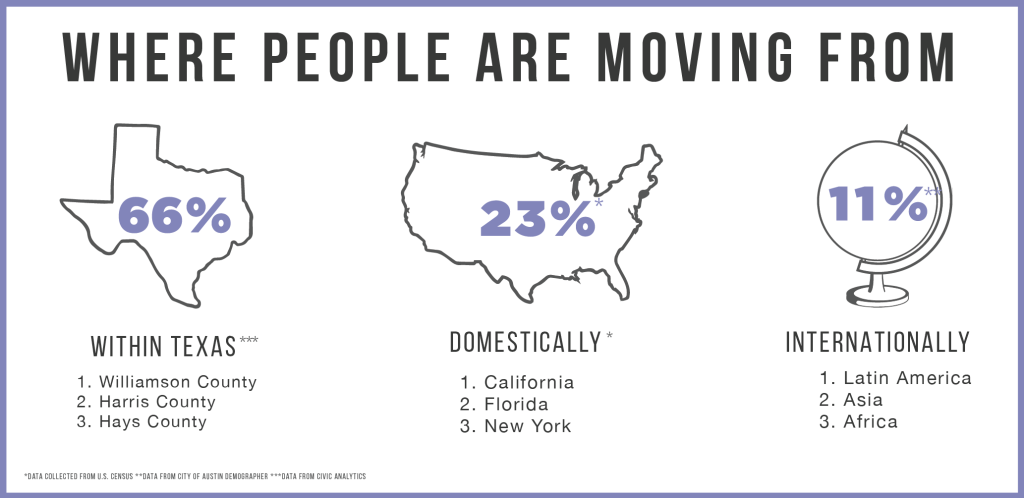
Austin’s tourism industry is booming. The secret is out about Austin’s incredible food, music, and outdoor vibes. With the Downtown Austin Alliance reporting 20.5 million visitors annually, and the Austin Visitor Center has moved to a larger space at East 4th Street to accommodate increasing tourist traffic.
Year round, visitors enjoy the unique experiences of local restaurants, bars, parks and trails, and the Capitol Building. The bats alone on Congress Avenue draw in 100,000 spectators annually, according to the City of Austin. Besides being the “Live Music Capital of the World”, this city is also growing as a top destination for conventions like SXSW (84,385 registered attendees). If these Austin experiences weren’t enough to secure the city as a national hotspot, events like the Formula 1 United States Grand Prix (237,406 attendees) and ESPN X Games (136,845 attendees) have attracted attention both domestically and internationally being globally broadcasted around the world in 215 countries.
Austin’s growing presence overseas is a large contributor to the millions of tourists each year as it tops nearly every published “Best Of” lists around the globe. The expansion of international airways is putting Austin on a global stage with an increasing number of direct international flights. Since the introduction of the first transatlantic flight to London Heathrow in 2014, the United Kingdom represents Austin’s largest market overseas.
Another crucial component of Austin’s tourism growth is attributed to conventions. Named “Top Meeting Destination in the U.S.” by the Professional Convention Management Association, up to 4,000 visitors come in for each convention. In 2012, there were 1,355 conventions serviced, booking 511,850 hotel room nights.
As a result of this, there are currently several real estate developments working to serve the needs of all these visitors. There are currently 7,400 hotel rooms downtown with an additional 2,072 rooms under construction. The recent opening of the JW Marriott and the Westin Downtown, coming in July, add an additional 1,378 rooms to that count, with 322 rooms coming to Hotel Van Zandt off Rainey Street opening in September.
Fortunately, this growing industry is benefiting our city immensely. Tourism brings in $6.2 billion and creates 50,100 jobs annually, states the City of Austin Marketing Plan. State and local taxes generated through tourism are estimated at $403 million yearly. It is no wonder that Austin has been ranked “#1 Economy in the Country” and “America’s #1 Fastest-Growing City.”


